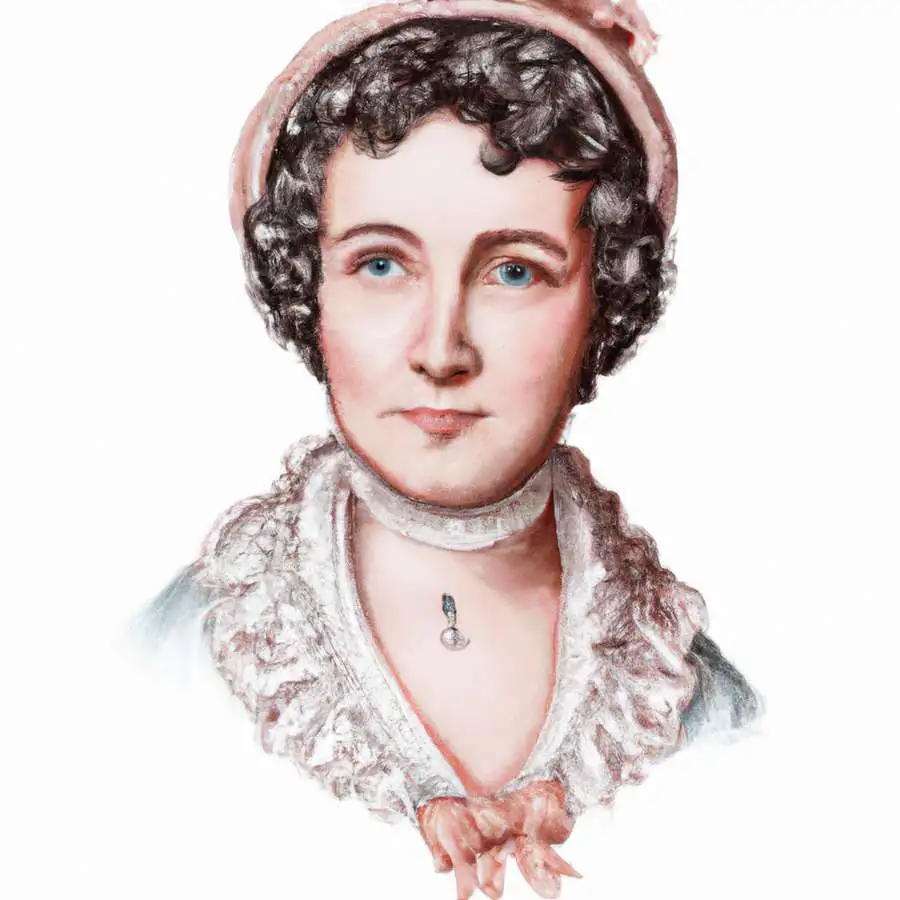Jane Austen: A Glimpse into the Life of a Literary Icon
Jane Austen, a beloved English novelist, holds a special place in the world of literature. Her timeless works, characterized by wit, social commentary, and keen observations of human nature, have captivated readers for generations. Born on December 16, 1775, in Steventon, Hampshire, Austen’s life was marked by her creative spirit, wit, and a unique ability to dissect society through her writing.

Early Life and Family Ties:
Jane Austen was born into a close-knit family. Her father, Reverend George Austen, was a scholarly clergyman, and her mother, Cassandra Leigh Austen, was known for her nurturing nature. Jane was the seventh of eight children, and her immediate family played a significant role in shaping her values, intellect, and sense of humor.
In an era when women’s education was limited, Jane Austen was fortunate to receive instruction at home. Her father encouraged her reading and writing, nurturing her intellect and imagination. Through her family’s extensive library, Jane was exposed to various literary genres and styles, which undoubtedly influenced her later works.
Early Writings and Juvenilia:
During her teenage years, Jane began crafting stories, poems, and plays. She engaged in a collection of writings known as her “juvenilia,” which showcased her developing literary talents and humorous outlook on life. These early creations provide a glimpse into the seeds of her future success as a novelist.
Family Relocation and Literary Endeavors:
In 1801, the Austen family moved to Bath due to financial constraints. This change brought about a shift in Jane’s surroundings, which in turn influenced her writing. It was during this time that she started working on her first full-length novels, laying the foundation for the novels that would later define her legacy.
Jane Austen: “Pride and Prejudice” and Literary Success
In 1813, Austen published “Pride and Prejudice,” a novel that would go on to become one of her most celebrated works. The story of Elizabeth Bennet and Mr. Darcy resonated with readers due to its engaging plot, sharp characterizations, and insightful social commentary. The novel’s exploration of class, marriage, and personal growth showcased Austen’s narrative prowess.
Life in Chawton and Continued Creativity:
Following her father’s retirement and her brother’s support, Jane Austen, her mother, and her sister Cassandra settled in Chawton Cottage in 1809. This period marked a fruitful phase of her career, during which she revised and completed many of her novels, including “Sense and Sensibility,” “Mansfield Park,” and “Emma.”
Despite her literary achievements, Austen faced challenges in getting her works published. Her novels often provided keen observations of society, but publishers were hesitant to embrace her unique style. Despite setbacks, Austen remained dedicated to her craft, continuously refining her narratives.

“Emma” and Exploration of Character:
Published in 1815, “Emma” demonstrated Austen’s masterful portrayal of complex characters. The protagonist, Emma Woodhouse, challenged societal norms with her strong-willed nature. Through Emma’s journey, Austen delved into themes of self-awareness, personal growth, and the dynamics of social relationships.
Austen’s health began to deteriorate in the early 1810s, but she persevered in her writing endeavors. She completed her final novel, “Persuasion,” which was published posthumously along with “Northanger Abbey.” On July 18, 1817, Jane Austen passed away at the age of 41. Her legacy, however, continued to grow.
Posthumous Recognition and Literary Influence: Jane Austen
In the decades following her death, Jane Austen’s novels gained increasing popularity. Her unique blend of humor, insight, and social commentary resonated with readers of different generations. Her works provided a window into Regency-era England while exploring themes that remain relevant today.
Austen’s legacy extends beyond her novels. Her influence can be seen in countless adaptations, including film, television, and even modern retellings. Her characters and narratives continue to inspire writers, filmmakers, and artists worldwide, showcasing the enduring power of her storytelling.
Chronological list of major works of Jane Austen
- “Sense and Sensibility” – Published in 1811
- “Pride and Prejudice” – Published in 1813
- “Mansfield Park” – Published in 1814
- “Emma” – Published in 1815
- “Northanger Abbey” – Written in 1803, Published posthumously in 1817
- “Persuasion” – Written in 1816, Published posthumously in 1817
- “Lady Susan” – Written in the 1790s, Published posthumously in 1871
- “Sanditon” – Started in 1817 but left unfinished, Published posthumously in various editions
These eight works encompass Austen’s completed novels, as well as some of her lesser-known works that have been published posthumously. Each of these novels showcases her unique style, wit, and keen insights into human nature and society.
Trivia facts about Jane Austen: a Literary Icon
- Pseudonyms and Anonymity: During her lifetime, Austen’s novels were published anonymously or under the pseudonym “A Lady.” This meant that her true identity as the author was not widely known until after her death.
- Family Ties: Austen’s family had strong literary connections. Her brother Henry helped publish her novels, and her niece Anna Lefroy wrote a continuation of Austen’s unfinished work “Sanditon.”
- Short and Sweet: Austen’s novels are known for their concise and precise writing. Her novels are relatively short compared to many of her contemporaries’ works, yet they are packed with wit, character development, and social commentary.
- Novel Beginnings: Austen began writing her novels at a young age. “Sense and Sensibility” was started when she was just 19, and “Pride and Prejudice” was originally titled “First Impressions” when she began it at 21.
- Love of Nature: Despite her focus on society and characters, Austen was also a keen observer of the natural world. Her letters often mention her walks and observations of nature, which occasionally made their way into her novels.
- Unfinished Business: Austen left two novels, “Sanditon” and “The Watsons,” unfinished. “Sanditon” is particularly intriguing, as it portrays a seaside resort and its inhabitants, offering a departure from her usual settings.
- Social Satire: Austen’s novels are known for their sharp social commentary and satirical elements. Her observations of the class system, marriage, and societal norms provide a window into the Regency era’s complexities.
These trivia facts offer a glimpse into the intriguing life and creative mind of Jane Austen, adding depth to our understanding of the beloved author.
Conclusion: Jane Austen
Jane Austen’s life journey, characterized by creativity, familial bonds, and an astute understanding of society, has left an indelible mark on the world of literature. Through her novels, she explored the complexities of human relationships, societal norms, and the journey towards self-discovery. Her wit, humor, and incisive observations continue to resonate with readers, reminding us that the truths of human nature transcend time and place.
Reviews of works by Jane Austen
Northanger Abbey
“Northanger Abbey” by Jane Austen: A Delightful Satire on Love, Literature, and the Allure of…
Sanditon
Jane Austen’s Unfinished Gem – “Sanditon” In the world of classic literature, Jane Austen’s name…
Emma
A Timeless Tale of Love and Self-Discovery – A Review of Jane Austen’s “Emma” Quick…
Mansfield Park
Navigating the Social Labyrinth – A Review of Jane Austen’s “Mansfield Park” Austen’s Complex Portrait…
Sense and Sensibility
Love and Reason: The Tale of “Sense and Sensibility” by Jane Austen “Sense and Sensibility”…
Pride and Prejudice
“A Timeless Tale of Love and Misunderstandings: Pride and Prejudice by Jane Austen” “Pride and…





